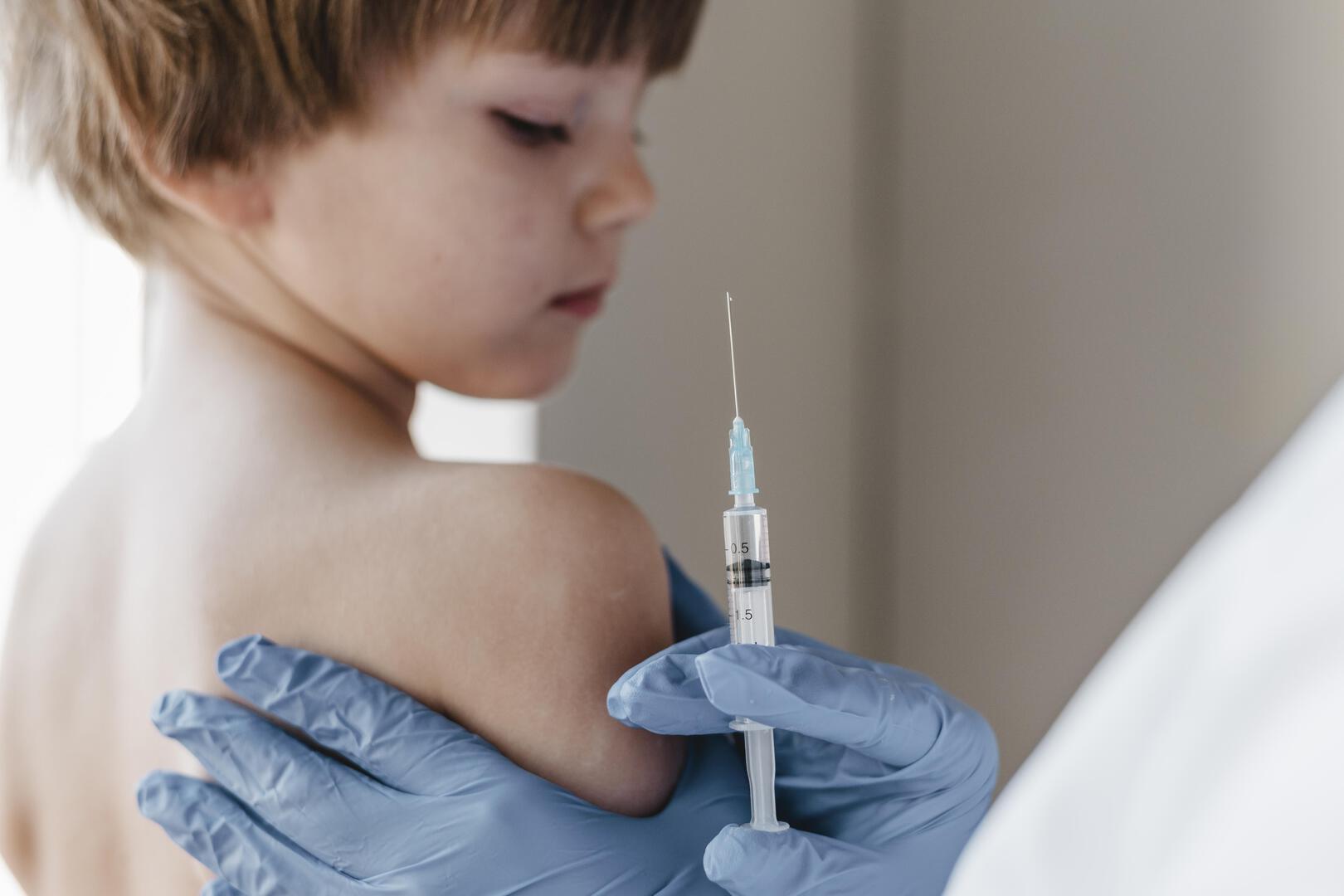KEY TAKEAWAYS
- The Tdap vaccine protects against tetanus, diphtheria, and pertussis.
- Different forms of the vaccine serve children, adolescents, adults, and pregnant women.
- Staying up to date with boosters keeps immunity strong and communities safer.
Vaccines protect you and your community from serious diseases that can spread quickly or cause lasting harm. The tetanus, diphtheria, and pertussis vaccine—often called Tdap or DTaP depending on age—guards against three dangerous infections that still appear worldwide. The Tdap vaccine protects you from tetanus (lockjaw), diphtheria, and pertussis (whooping cough) by helping your immune system build strong, lasting defenses.
You face tetanus risk through cuts or wounds, while diphtheria and pertussis spread from person to person. Getting vaccinated lowers your chances of infection and helps protect infants and others who cannot yet be fully immunized. Tdap and DTaP work in similar ways but are recommended for different age groups and situations, including pregnancy and booster schedules for adults.
Understanding how and when to get vaccinated helps you stay protected and confident in your health choices. The Tdap vaccine’s safety record and long-term benefits make it a key part of routine preventive care.
CONTENTS
1. UNDERSTANDING THE TETANUS DIPHTHERIA PERTUSSIS VACCINE
- WHAT IS THE TDAP VACCINE?
- HOW THE VACCINE WORKS
- DISEASES PREVENTED: TETANUS, DIPHTHERIA, AND PERTUSSIS
2. TDAP VACCINE TYPES AND COMPARISON
3. WHO NEEDS THIS VACCINE? (DTAP VS. TDAP)
- THE DTAP SERIES: FOR INFANTS AND YOUNG CHILDREN
- THE TDAP BOOSTER: FOR ADOLESCENTS AND ADULTS
- TDAP VACCINATION DURING PREGNANCY (WHY IT’S CRITICAL)
4. TDAP VACCINE ADMINISTRATION AND SCHEDULE
5. SAFETY, SIDE EFFECTS, AND PRECAUTIONS
- COMMON AND RARE SIDE EFFECTS
- CONTRAINDICATIONS AND SPECIAL CONSIDERATIONS
- GUILLAIN-BARRÉ SYNDROME AND GBS RISK
6. BROADER IMPACT OF TDAP VACCINATION

VACCINATION PROGRAM
Explore our range of vaccination programs designed for your specific health needs.
UNDERSTANDING THE TETANUS DIPHTHERIA PERTUSSIS VACCINE
This vaccine protects you from three serious bacterial infections that can cause muscle stiffness, breathing problems, and severe coughing. It helps your body build lasting immunity and reduces the risk of spreading these diseases to others, especially infants and those with weakened immune systems.

WHAT IS THE TDAP VACCINE?
The Tdap vaccine combines protection against tetanus, diphtheria, and acellular pertussis. It is recommended for children aged 7 years and older, adolescents, and adults.
You usually receive a single Tdap dose around age 11 or 12, followed by a booster every 10 years. Pregnant women should get a dose during each pregnancy to help protect newborns from whooping cough.
Tdap differs from DTaP, which is given to younger children, and from Td, which protects only against tetanus and diphtheria. The vaccine can be given at the same time as other routine immunizations.
Common mild effects include soreness, redness, or swelling at the injection site, and sometimes mild fever or fatigue. These reactions usually go away within a few days.
HOW THE VACCINE WORKS
The Tdap vaccine uses inactivated bacterial components rather than live bacteria. These components trigger your immune system to produce antibodies that recognize and fight the toxins produced by the bacteria.
Because the pertussis portion is acellular, it contains purified antigens instead of whole cells, which reduces side effects while maintaining strong protection.
After vaccination, your immune system “remembers” these antigens. If you later encounter the bacteria that cause tetanus, diphtheria, or pertussis, your body can respond quickly to prevent serious illness.
Booster shots are needed because immunity decreases over time. Maintaining up-to-date vaccination helps ensure continued protection, especially after injuries that may expose you to tetanus spores.
DISEASES PREVENTED: TETANUS, DIPHTHERIA, AND PERTUSSIS
Tetanus (lockjaw) occurs when bacteria enter the body through cuts or wounds. It causes painful muscle stiffness, difficulty swallowing, and can be fatal without treatment.
Diphtheria spreads through respiratory droplets and can block airways, damage the heart, and cause paralysis. Vaccination has made it rare in many countries.
Pertussis (whooping cough) spreads easily by coughing and can cause severe, prolonged coughing fits. It is especially dangerous for infants, leading to pneumonia or brain injury.
| Disease: Tetanus | |
|---|---|
| How It Spreads | Enters through wounds |
| Key Symptoms | Muscle stiffness, spasms |
| Main Risk Without Vaccine | Breathing failure, death |
| Disease: Diphtheria | |
|---|---|
| How It Spreads | Person-to-person |
| Key Symptoms | Throat membrane, heart damage |
| Main Risk Without Vaccine | Airway blockage, paralysis |
| Disease: Pertussis | |
|---|---|
| How It Spreads | Respiratory droplets |
| Key Symptoms | Severe cough, “whoop” sound |
| Main Risk Without Vaccine | Pneumonia, seizures, death |
TDAP VACCINE TYPES AND COMPARISON
You receive protection from tetanus, diphtheria, and pertussis through combination vaccines that differ by age group and formulation. Each vaccine type uses specific components to build immunity while minimizing side effects and maintaining safety.

TDAP VS DTAP AND OTHER VACCINES
Tdap and DTaP both protect against tetanus, diphtheria, and pertussis, but they serve different age groups. DTaP is for children under 7 years old, while Tdap is for preteens, adults, and pregnant people.
| Vaccine: DTaP | |
|---|---|
| Diseases Covered | Diphtheria, Tetanus, Pertussis |
| Age Group | <7 years |
| Booster Interval | Series of 5 doses |
| Examples | Infanrix®, Daptacel® |
G
| Vaccine: Tdap | |
|---|---|
| Diseases Covered | Tetanus, Diphtheria, Pertussis |
| Age Group | ≥7 years |
| Booster Interval | Every 10 years |
| Examples | Adacel®, Boostrix® |
| Vaccine: Td | |
|---|---|
| Diseases Covered | Tetanus, Diphtheria |
| Age Group | ≥7 years |
| Booster Interval | Every 10 years |
| Examples | Tenivac® |
D
| Vaccine: DT | |
|---|---|
| Diseases Covered | Diphtheria, Tetanus |
| Age Group | <7 years |
| Booster Interval | Series of 5 doses |
| Examples | — |
You may also encounter combination vaccines that include polio or hepatitis B components for children. These help reduce the number of injections during early childhood immunization.
ACELLULAR VS WHOLE-CELL PERTUSSIS VACCINE
Modern Tdap and DTaP vaccines use an acellular pertussis component, meaning they contain purified parts of the Bordetella pertussis bacteria rather than the entire cell. This design lowers the risk of side effects such as fever or swelling.
Earlier formulations used whole-cell pertussis vaccines, which contained inactivated bacteria. While effective, they caused more frequent reactions, leading to the shift toward acellular versions in the 1990s.
You receive the same immune protection from acellular vaccines, but with improved tolerability. The acellular design also allows consistent manufacturing and easier quality control, ensuring reliable protection against pertussis while maintaining safety for children and adults.
WHO NEEDS THIS VACCINE? (DTAP VS. TDAP)
You receive protection from diphtheria, tetanus, and pertussis through different vaccines depending on your age and health status. Infants and young children start with a series of DTaP doses, while older children, teens, and adults maintain protection with Tdap boosters. Pregnant people also need a Tdap dose to protect both themselves and their newborns.

THE DTAP SERIES: FOR INFANTS AND YOUNG CHILDREN
You begin your protection early in life with the DTaP vaccine, which builds immunity against all three diseases. The Centers for Disease Control and Prevention (CDC) recommends a five-dose series for children under 7 years old.
| Dose: 1st | |
|---|---|
| Recommended Age | 2 months |
| Dose: 2nd | |
|---|---|
| Recommended Age | 4 months |
| Dose: 3rd | |
|---|---|
| Recommended Age | 6 months |
| Dose: 4th | |
|---|---|
| Recommended Age | 15–18 months |
| Dose: 5th | |
|---|---|
| Recommended Age | 4–6 years |
Each dose strengthens your child’s immune response. If your child misses a dose, your health care provider can help create a catch-up schedule to ensure complete protection. DTaP is not given to anyone 7 years or older because the vaccine formulation is designed for younger immune systems.
THE TDAP BOOSTER: FOR ADOLESCENTS AND ADULTS
You need the Tdap vaccine as a booster once your childhood protection starts to fade. The CDC advises one dose of Tdap at 11–12 years of age. This booster renews your defense against tetanus, diphtheria, and pertussis.
If you never received Tdap as a teen, you should get a dose as an adult. After that, receive a booster every 10 years using either Td or Tdap. Adults who work in health care, child care, or live with infants should stay current on their Tdap vaccination to reduce the risk of transmitting pertussis to vulnerable individuals.
TDAP VACCINATION DURING PREGNANCY (WHY IT’S CRITICAL)
You should receive a Tdap vaccine during every pregnancy, ideally between 27 and 36 weeks of gestation. This timing allows your body to pass protective antibodies to your baby before birth.
These antibodies help protect your newborn from pertussis until they can start their own DTaP series at two months old. The vaccine is safe for both you and your baby and does not contain live bacteria. If you were not vaccinated during pregnancy, your health care provider may recommend getting Tdap immediately after delivery to reduce the chance of passing pertussis to your infant.
TDAP VACCINE ADMINISTRATION AND SCHEDULE
You receive the Tdap vaccine to maintain protection against tetanus, diphtheria, and pertussis throughout life. The timing of doses depends on your age, vaccination history, and certain health situations such as pregnancy or wound management.

RECOMMENDED DOSING SCHEDULE
You should receive one Tdap dose at 11–12 years of age as part of the routine immunization schedule. If you missed that dose, you can get it later as an adult.
Adults who have never received Tdap should get a single dose at any time, followed by a booster of Tdap or Td every 10 years. A booster may be given after 5 years if you experience a severe or contaminated wound.
If you are pregnant, you should receive Tdap during every pregnancy, preferably in the early part of the third trimester. This helps protect your newborn from pertussis before they begin their own immunization series.
For children under 7 years, a different vaccine (DTaP) is used. Tdap is intended for people aged 7 years and older. Health Canada and the U.S. Centers for Disease Control and Prevention (CDC) both recommend following these schedules to maintain community immunity.
WHERE TO GET VACCINATED
You can get the Tdap vaccine at several convenient locations:
| Location: Doctor’s office or clinic | |
|---|---|
| Who Provides It | Health care provider |
| Notes | Best for reviewing your vaccination record |
| Location: Pharmacy | |
|---|---|
| Who Provides It | Pharmacist |
| Notes | Many pharmacies offer walk-in Tdap vaccination |
D
| Location: Public health unit | |
|---|---|
| Who Provides It | Local health authority |
| Notes | Often provides vaccines for adults and teens |
Look
| Location: Workplace or school programs | |
|---|---|
| Who Provides It | Occupational health staff |
| Notes | Sometimes available during immunization campaigns |
Bring your immunization record so your provider can update it. If you’re unsure when your last dose was, your health care provider can help determine whether you need a booster.
SAFETY, SIDE EFFECTS, AND PRECAUTIONS
You can expect the tetanus, diphtheria, and pertussis vaccines (DTaP, Tdap, or Td) to have a strong safety record supported by decades of monitoring. Most reactions are mild and temporary, but certain health conditions or allergic histories may require extra care and medical guidance.

COMMON AND RARE SIDE EFFECTS
Most people experience mild side effects that appear within a day or two after vaccination. These usually include:
| Common Effects: Pain, redness, or swelling at the injection site | |
|---|---|
| Typical Duration | 1–3 days |
| Common Effects: Mild fever or fatigue | |
|---|---|
| Typical Duration | 1–2 days |
| Common Effects: Headache or muscle soreness | |
|---|---|
| Typical Duration | 1–2 days |
| Common Effects: Temporary loss of appetite or nausea | |
|---|---|
| Typical Duration | 1–2 days |
You may also notice slight swelling of the arm or leg where the shot was given, especially after multiple doses.
Rare reactions can include severe swelling of the limb, high fever, or allergic responses such as hives or difficulty breathing. These events occur in a very small number of people. If you experience trouble breathing, facial swelling, or dizziness, seek emergency care immediately.
CONTRAINDICATIONS AND SPECIAL CONSIDERATIONS
You should not receive a tetanus, diphtheria, or pertussis vaccine if you have had a severe allergic reaction to a previous dose or to a vaccine component. People who developed encephalopathy (brain inflammation) within seven days of a prior pertussis vaccine should avoid further pertussis-containing vaccines.
If you are moderately or severely ill, your health care provider may recommend delaying the vaccine until you recover. Pregnant individuals are advised to receive the Tdap vaccine during each pregnancy, ideally between 27 and 36 weeks, to help protect newborns from pertussis.
Those with a history of neurological disorders, seizures, or immune system conditions should discuss potential risks and benefits with their provider before vaccination.
GUILLAIN-BARRÉ SYNDROME AND GBS RISK
Guillain-Barré Syndrome (GBS) is a rare neurological disorder in which the immune system attacks the nerves, sometimes causing weakness or paralysis. Research shows no consistent link between Tdap or DTaP vaccines and an increased risk of GBS.
If you have previously developed GBS within six weeks after receiving a tetanus-containing vaccine, your provider may evaluate whether to postpone or avoid another dose.
Large safety studies and ongoing surveillance through systems like the Vaccine Adverse Event Reporting System (VAERS) continue to show that the overall risk of GBS after these vaccines is extremely low. For most people, the benefits of vaccination far outweigh this rare potential risk.
BROADER IMPACT OF TDAP VACCINATION
Receiving the Tdap vaccine helps protect not just you but also those around you. It reduces the spread of pertussis, diphtheria, and tetanus, supports stable community immunity, and fits into broader immunization programs that strengthen public health infrastructure.

COMMUNITY IMMUNITY AND PUBLIC HEALTH
When you get vaccinated with Tdap, you contribute to community immunity. This means fewer people can carry or spread pertussis and diphtheria, lowering exposure for infants, older adults, and others at higher risk.
Public health agencies, including Health Canada and the Centers for Disease Control and Prevention (CDC), emphasize maintaining high Tdap coverage. These programs track immunization rates to identify areas where coverage falls below protective levels.
| Group: Adolescents | |
|---|---|
| Recommended Coverage | ≥80% |
| Key Benefit | Sustains immunity into adulthood |
| Group: Adults | |
|---|---|
| Recommended Coverage | ≥60% |
| Key Benefit | Reduces transmission to infants |
| Group: Seniors | |
|---|---|
| Recommended Coverage | ≥50% |
| Key Benefit | Prevents severe complications |
High vaccination rates reduce hospitalizations and healthcare costs. By staying current on your Tdap booster, you help maintain a safer environment for everyone.
ROLE IN PREVENTING OUTBREAKS
Pertussis outbreaks can occur when vaccination coverage declines. You can help prevent these events by receiving Tdap on schedule, especially if you work in healthcare, education, or childcare.
Studies show that using Tdap instead of Td during wound management prevents thousands of pertussis cases annually in the United States. The small additional cost per person is offset by fewer infections and reduced treatment expenses.
Outbreak prevention also relies on rapid identification and booster programs. When you stay protected, you reduce the chance of transmitting disease to newborns who are too young for full immunization. This approach mirrors the success of the polio vaccine, which virtually eliminated polio transmission in many regions through consistent coverage.
INTEGRATION WITH OTHER VACCINES
Tdap fits into the broader schedule of routine immunizations for adolescents and adults. You can receive it alongside the influenza, hepatitis B, or polio vaccine, depending on your healthcare provider’s recommendations.
Health Canada supports coordinated vaccination visits to improve compliance and reduce missed opportunities. Combining vaccines during one appointment saves time and strengthens protection across multiple diseases.
Integrated immunization programs also simplify recordkeeping and ensure long-term immunity. By keeping your Tdap and other vaccines up to date, you help sustain a reliable defense against preventable infections in your community.

VACCINATION PROGRAM
Explore our range of vaccination programs designed for your specific health needs.

